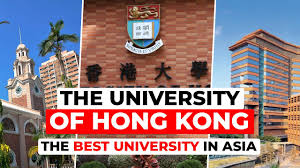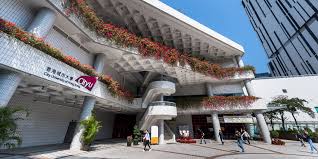
Job description
The lack of timely diagnosis and appropriate intervention threatens the preservation of built cultural heritage. For instance, modern concrete heritage is now reaching an age when deterioration and corrosion become significant. Reinforced concrete structures have started to be built in the Netherlands in the early 1900s. A large number of the surviving early 20th century structures are now listed monuments or well-known community landmarks. Structures build after World WII are now coming into attention, and facing challenges in terms of material damage. The most common damage types applicable are carbonation- and chloride-induced corrosion. Recent research has brought attention to the accelerated damage to built structures due to increased temperatures and relative humidities, increased CO2 levels, and more frequent drying and wetting cycles which induce salt damage.
After determining the type of damage through visual inspection, in most cases the cause of the damage is still not clear. For instance, the main type of damage and the most dangerous to the life and safety of the concrete structure is reinforcement damage. However, if the corrosion is due to chloride attack (38% of cases), carbonation (17%), matrix-induced effects such as shrinkage/expansion (14%), or a mixture of these, cannot be easily determined. Moreover, damage types such as cracks, spalling etc. have the same causes and might also hide (imminent) reinforcement damage. For non-heritage structures, invasive techniques are applied to determine the cause and extent of the damage: samples can be taken from the structure and analyzed in a laboratory for composition, porosity, water ingress, carbonation and chloride intrusion front etc. However, in the field of cultural heritage, such samples (drilled cores) cannot be extracted in most cases, and a minimally invasive or non-invasive technique needs to be used.
This project aims to combine the know-how of the Building Materials Group in terms of innovative characterization and modelling techniques with non-invasive testing and proposing and evaluating acceptable intervention methods for damage repair of heritage buildings and structures that maintain the richness of their authenticity.
The Building Materials group contains 25 PhDs, 2 postdocs, 3 assistant professors, 1 associate professor and 2 full professors. The BM group works on new, sustainable building materials containing or synthesized from secondary raw materials with good chemical, physical and aesthetic properties and added functionalities. Examples are natural fibers, fly ashes, nano-silica, aerogels, slags or recycled aggregates. Functionalities, including fire resistance, air purification, self-cleaning, high performance, hydrophobicity, are investigated and developed for these building materials. Moreover, durability and sustainability, such as the degradation of, or leaching from, building materials when exposed to aggressive service environments, is studied. The investigations are carried out based on experimental observations and modelling.
The research group possesses a well-equipped, state of the art building material laboratory for physical/chemical/mechanical/environmental testing, and has access to the structural design laboratory at the same department, and shares facilities with the sister Department of Chemical Engineering and Chemistry. The group has close contacts with the building material industry and is frequently cooperating with other researchers, both domestic and international.
Job requirements
We are looking for excellent and highly motivated candidates with:
- a MSc degree in (civil, mechanical, chemical, mining) engineering or related disciplines with an interest in both modeling and experimentation.
- able to work independently, have strong communication skills and the attitude to participate successfully in an international and multidisciplinary team.
Any of the following could be considered an advantage and should be mentioned in the motivation letter:
- Previous experience with building materials and or non-destructive analysis methods
- Experience with relevant chemical/physical characterization techniques such as XRD, XRF, SEM etc.
- Previous publications and scientific communications
- Affinity/experience with materials research and/or laboratory experience
- A sufficient English language level, both written and spoken, is required. Proofs of English level (such as certificates, coursework followed in English, manuscripts written in English etc.) should be mentioned.
Candidates who already hold the title of PhD/Doctor will not be considered for the current vacancy.
Conditions of employment
- A meaningful job in a dynamic and ambitious university with the possibility to present your work at international conferences.
- A full-time employment for four years, with an intermediate evaluation (go/no-go) after nine months.
- To develop your teaching skills, you will spend 10% of your employment on teaching tasks.
- To support you during your PhD and to prepare you for the rest of your career, you will make a Training and Supervision plan and you will have free access to a personal development program for PhD students (PROOF program).
- A gross monthly salary and benefits (such as a pension scheme, pregnancy and maternity leave, partially paid parental leave) in accordance with the Collective Labor Agreement for Dutch Universities, from € 2443 in the first year to € 3122 in the fourth year.
- Additionally, an annual holiday allowance of 8% of the yearly salary, plus a year-end allowance of 8.3% of the annual salary.
- Should you come from abroad and comply with certain conditions, you can make use of the so-called ‘30% facility’, which permits you not to pay tax on 30% of your salary.
- A broad package of fringe benefits, including an excellent technical infrastructure, moving expenses, and savings schemes.
- Family-friendly initiatives are in place, such as an international spouse program, and excellent on-campus children day care and sports facilities.
Information and application
More information
Do you recognize yourself in this profile and would you like to know more? Please contact
prof.dr. H.J.H. Brouwers, e-mail: h.j.h.brouwers[at]tue.nl.
For information about terms of employment, click here or contact HRServices.be[at]tue.nl
Please visit www.tue.nl/jobs to find out more about working at TU/e!
Application
We invite you to submit a complete application by using the ‘apply now’-button on this page. The application should include a:
- Cover letter in which you describe your motivation and qualifications for the position.
- Curriculum vitae, including a list of your publications and the contact information of three references.
- Brief description of your MSc thesis.
We look forward to your application and will screen your application as soon as possible. The vacancy will remain open until the position is filled.
We do not respond to applications that are sent to us in a different way.
Please keep in mind you can upload only 5 documents up to 2 MB each. If necessary please combine files.




